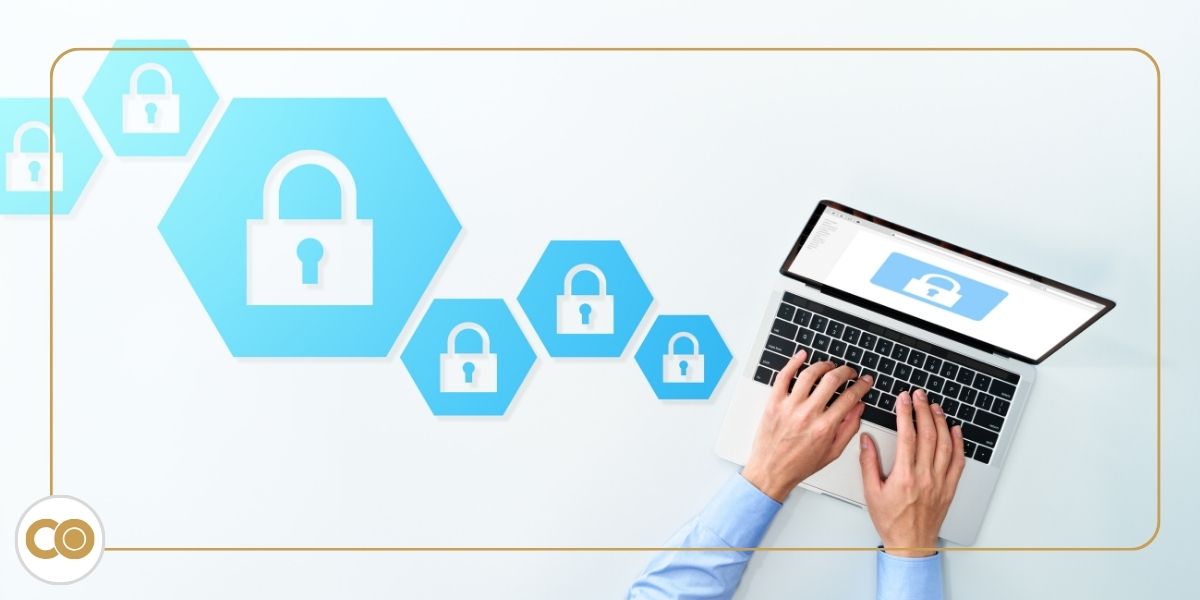Best Data Security Features for HCM Systems
November 17th, 2023 | 6 min. read

Picture this: You’re checking out of work and into the nicest hotel around for a much-needed vacation (I’m talking 5-star rating, suite only, down pillows…the works). You exchange your ID and credit card for a room key and enter what promises to be the perfect weekend. Sounds like a dream, right?
But then: All checked in, cares left at the vaulted door, and a day of endless possibilities at your fingertips, you get word of a cyberattack that caused a massive data breach at your hotel. Sirens in your mind go off as you realize this just compromised all of your personal information (I’m talking name, address, date of birth…the works). Sounds like a nightmare, right?
Well, this scenario isn’t fiction!
As reported by CNN, this is exactly what happened to MGM Resorts International™, a leading hotel and entertainment company, earlier this year. Hackers infiltrated their systems, stealing the personal information of countless individuals. This breach should serve as a stark reminder of the ever-present threat of cyberattacks and the devastating consequences they can have.
And, as a matter of fact, it directly applies to your business!
While the hospitality industry may be particularly vulnerable to such attacks, the need for ironclad data security measures extends to reach businesses across all industries.
In today’s digital age, where software – like Human Capital Management (HCM) technology – is essential to business operations, it is more critical than ever to make sure your platform has the capability to protect sensitive employee data.
In this article, we will explore the importance of data security to the implementation of HCM software. By reading it, you will learn the 5 best data security features that HCM systems use to safeguard sensitive employee information and mitigate risks associated with data breaches.
HCM data security – A necessity, not an option
HCM systems store a wealth of sensitive employee data like identification information, payroll details, and healthcare documentation.
A breach in these systems could have far-reaching implications for your business and your employees, including:
- Financial loss – If you experience a data breach, you could face fines, lawsuits, and the costs associated with notifying and assisting affected employees.
- Compliance violations – If you fail to protect your employees' data, you may be subject to fines and penalties under data privacy regulations.
- Employee vulnerability – If your employees’ personal information is compromised, they may face identity theft, fraud, and other forms of harm.
- Reputational damage – If a data breach occurs, it can severely damage your company's reputation, erode employee and customer trust, and make it difficult to attract and retain talent.
For these reasons, prioritizing robust data security measures within your HCM system isn't just a strategic choice – it's an essential responsibility to safeguard your business and your employees.
Best data security features for HCM systems
So, how exactly do you ensure that your software system is fortified against cyber threats?
In this section, we will explore the top 5 data security features for HCM technology that can help safeguard you from data breaches.
1. Two-factor authentication (2FA) provides a dual-layered defense for data
Two-factor authentication (2FA) is an advanced security protocol that requires two separate forms of identification to access an account or system. This method typically requires a combination of a known password and a second factor, such as a unique code sent to a user's smartphone, a biometric verification like fingerprint or facial recognition, or a physical security token.
According to Google data, 2FA significantly enhances security compared to traditional single-password methods, blocking 100% of automated bot hacks and reducing account breaches by 50%.
In HCM systems, where sensitive employee data including personal and financial details are stored, 2FA can stop cyber-attacks in their tracks. It creates a strong barrier against unauthorized access, ensuring that even if a password is compromised, the likelihood of a breach remains low.
Plus, with the increasing demand for remote work, 2FA is a great way to add an extra layer of security for employees accessing the system from a variety of locations and devices.
When implemented as an HCM security feature, 2FA can provide both employers and employees with assurance surrounding the security of their information.
2. Customizable access controls offer a personalized security measure
Access controls are mechanisms that regulate who can view, use, or modify resources within a system or network. These controls create a form of authorization for access to information and functionalities. Being able to customize these controls supports a more sophisticated approach to this type of data management.
When built into HCM systems, customizable access controls guarantee that only the right people have access to the right data. They allow businesses to tailor user access based on specific job roles and responsibilities, ensuring employees access only the data necessary for their tasks. This targeted access not only boosts security but also streamlines workflow, increasing efficiency and productivity.
In scenarios where employees change roles or leave the organization, having customizable access controls allows for quick and easy adjustments to access rights. This agility makes data security possible even in dynamic company environments.
As an HCM feature, customizable access controls also help businesses maintain compliance with data protection regulations like GDPR and HIPAA. Because these regulations require strict control over who has access to personal and sensitive information, the use of this feature allows businesses to avoid potential financial and legal penalties.
In addition to enhancing security, these controls can provide valuable insights into data usage patterns within an organization. By monitoring who uses what data and when, businesses can identify potential internal threats or inefficiencies in data management.
3. Direct data transmission guarantees secure and efficient data flow
Think of direct data transmission like a nonstop flight – it takes you from point A to point B without any layovers. Direct data transmission works the same way, moving data directly from its source to its destination without intermediate steps or the use of third-party services.
HCM systems with this feature can send information securely and efficiently, allowing for:
- Enhanced security – Direct data exchange minimizes the exposure of data to potential cyber threats, significantly lowering the chances of breaches and unauthorized access between servers.
- Efficient multi-system communication – This method ensures a safe and direct flow of data across various systems, eliminating the need for intermediate steps.
- Streamlined data handling – By removing the need for downloading and uploading, direct data transmission saves significant time and storage space, offering a more efficient data management process.
- Automated and scheduled transfers – The ability to automate and schedule data transfers reduces manual tasks and ensures timely and consistent data delivery, enhancing operational efficiency.
With this feature incorporated into HCM systems, businesses can enjoy a seamless, secure, and efficient data-handling experience. And in today's fast-paced and digitally-driven work environments, that is an invaluable asset.
4. IP tracking enables surveillance against potential cyber threats
IP tracking is a cybersecurity tool that involves the monitoring and analysis of Internet Protocol (IP) addresses. Because each internet-connected device has a unique IP address that acts like a digital identifier, IP tracking helps to determine the origins of digital connections and identify potential security threats.
In HCM systems, IP tracking serves as an early detection mechanism for unusual or unauthorized access attempts.
A few key benefits of IP tracking as an HCM feature include:
- Enhanced security – IP tracking allows real-time monitoring of system access. It quickly flags suspicious activities, such as access from unfamiliar or distant IP addresses, potentially indicating a security breach.
- Geo-fencing – Implementing IP tracking enables organizations to restrict system access based on location or IP ranges, adding an extra security layer.
- Forensic analysis – In the case of a breach, IP tracking aids in investigating security incidents. It helps reconstruct events, identify breach sources, and inform future prevention strategies.
- Optimized user experience – By understanding typical access patterns, businesses can tailor system performance and accessibility, enhancing the user experience while maintaining security.
5. Encryption acts as a coded barrier to protect sensitive information
Encryption involves transforming readable data into a secure, coded format, accessible only with a specific decryption key.
As an HCM system component, encryption serves two primary purposes:
- Securing stored data
- Protecting data during transmission
Notably, during server downtimes, encrypted data remains secure and unreadable without the correct keys, providing a strong defense against breaches and ransomware attacks.
Encryption also allows for confidential internal communications within HCM platforms, safeguarding exchanges like salary discussions and personal employee details. This not only enhances security but also builds trust among employees about the safety of their personal information.
The future of HCM data security
Looking ahead, the landscape of HCM data security is rapidly evolving.
Key advancements include the integration of AI for predictive threat analysis, the application of blockchain for enhanced data integrity, and the ongoing development of sophisticated encryption methods.
These innovations are not just trends – they are becoming essential components in the defense of sensitive employee data.
With these new technologies, the future of HCM data security promises to be more dynamic, more secure, and more ready to meet the challenges of an increasingly digital world.
Take the next steps – Implement an HCM system with the best data security features
Picture this: You've just read through an article exploring the best data security features for HCM systems.
But then: Even with the knowledge of these features, you are not sure how to implement a secure software system, sure to protect your business and your employees.
Well, this scenario isn’t fiction!
You’re here because you want to ensure that your business has access to the most advanced security features available. And, at Combined, we are here to help you do just that.
Our HCM experts are ready to guide you toward an HCM system designed with the security of your business and your employees in mind.
And, as a matter of fact, you can get started today!
Schedule a meeting to learn more.

This article is not intended to be exhaustive nor should any discussion or opinions be construed as legal advice. Readers should contact legal counsel for legal advice.
.png?width=1125&height=426&name=Your%20paragraph%20text%20(5).png)
